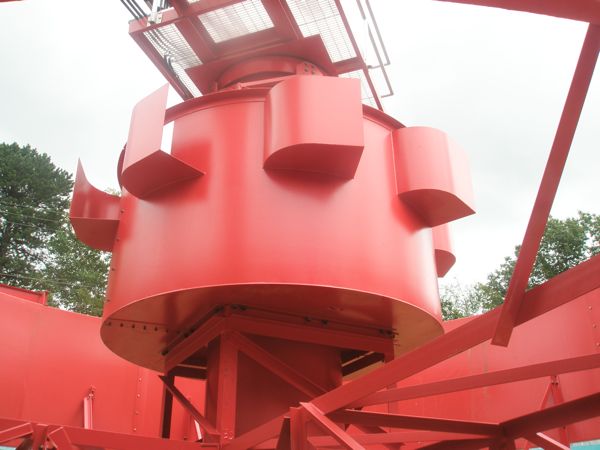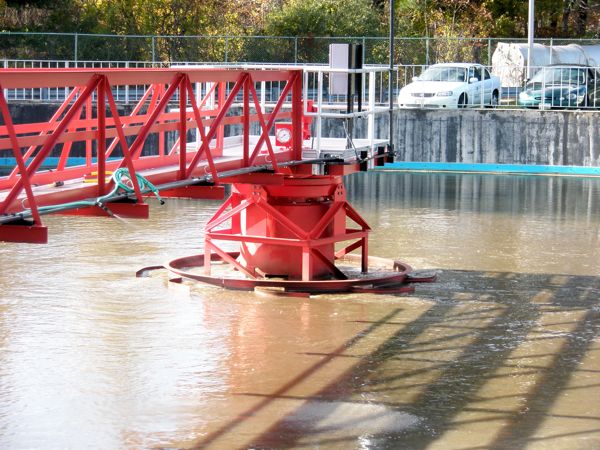

Mid-West ClarifiersDownload a pdf for your convenience. Project Description:This municipal plant had three large draft tube clarifiers following a conventional activated sludge facility. These clarifiers were in the process of being "upgraded" with spiral scrapers and a "tangential port" energy-dissipating inlet (EDI)...and a larger centerwell. Problem:This project was still under construction when we were contacted by the regulatory agency to provide an evaluation. It seems that the two newly-completed clarifiers were performing poorer than the remaining original draft tube clarifier at normal flows. The specifications had called for an "LA-EDI or equal". Although the contractor's submittal of a tangential-port EDI was originally rejected by the Engineer, a subsequent submittal of a CFD model analysis (showing that the "tangential port" EDI was better than the LA-EDI) was accepted as proof of its performance. Our Findings:1. The two new clarifiers had their centerwells submerged by about 0.2 ft at normal flow. We had one centerwell raised to prevent flow over the top...and then tested alongside the second new clarifier with the submerged centerwell. This test showed that the effluent from the clarifier with the raised centerwell was 7 mg/l; the effluent from the modified clarifier with the submerged centerwell was 24 mg/l! Solutions:1. The centerwell was raised on all clarifiers, thereby preventing short-circuiting of the MLSS to the effluent.
The Result:The extreme modifications to the centerwells and the EDIs have improved the performance of the new clarifiers somewhat, but not up to the level anticipated with the original design. What Have We Learned (Again??):A. "You can't make a silk purse out of a sow's ear".
 The Problem: a Tangential Port EDI  Outflow From a Submerged Centerwell |